About product
Whole Ashwagandha Root, also known as Indian Ginseng or Winter Cherry, is a foundational herb in traditional Ayurvedic practice. Revered as a Rasayana across classical texts, it is traditionally used in daily rituals, seasonal rejuvenation routines, and holistic wellness regimens. Our Ashwagandha is hand-harvested, shade-dried, and minimally processed to maintain its natural potency and sensory authenticity. The firm, earthy root is ideal for preparing decoctions, powders, or traditional infusions.
Crafted for Ayurveda enthusiasts, herbalists, and cultural purists, this product honors centuries-old traditions. Whether you’re preparing a warming winter tonic or following a classical Rasayana regimen, whole Ashwagandha root offers unmatched botanical integrity.
Ayurvedic Significance
- Rasa (Taste): Tikta (bitter), Kashaya (astringent), Katu (pungent)
- Guna (Quality): Laghu (light), Snigdha (unctuous)
- Virya (Potency): Ushna (hot)
- Vipaka (Post-digestive effect): Madhura (sweet)
- Dosha Balance: Traditionally used to pacify Vata and Kapha
Product Specs
- Botanical Name: Withania somnifera
- Common Name: Ashwagandha, Indian Ginseng, Winter Cherry
- Product Form: Whole dried root
- Available Weight: 50g,100g, 200g, 400g, 800g
- Packaging Type: Eco-friendly, Transperent pouch with outer box packaging.
- Processing Method: Naturally dried, hand-sorted
- Shelf Life: 18 months from packaging
- Country/Region of Origin: India
- Storage Instructions: Store in a cool, dry place away from sunlight
- Suitable For: Classical Ayurvedic preparations, Vata-Kapha balance, seasonal rituals
Key Features & Benefits
- Ethically sourced from traditional Ayurvedic regions
- Shade-dried to retain natural aroma and color
- Ideal for preparing classical Ayurvedic formulas (churna, kwath)
- Resealable eco-pack keeps the herb fresh and potent
We honor Ayurvedic principles by sourcing herbs directly from regions known for their botanical purity. Our Ashwagandha is collected using traditional methods and handled without industrial processing to preserve its integrity and ritual relevance. No artificial drying, no additives—just pure botanical heritage.
Synergistic Herbs
Traditionally combined with:
- Shatavari: For rejuvenation
- Brahmi: For mental clarity
- Licorice: For harmonizing
- Guduchi: For immunity and detox
- Tulsi: For respiratory support
These combinations are widely used in Rasayana therapies and classical herbal blends.
Regional Use & Nomenclature
Multilingual Naming Table
| Region/Language | Native Script | Roman Transliteration | Cultural Note |
|---|---|---|---|
| Hindi | अश्वगंधा | Ashwagandha | Common in Chyawanprash and Rasayana tonics |
| Tamil | அமுக்கரா | Amukkara | Used in Siddha medicine |
| Telugu | పెన్నేరు | Penneru | Herbal preparations in Andhra traditions |
| Kannada | ಅಶ್ವಗಂಧ | Ashwagandha | Part of strength-building decoctions |
| Bengali | অশ্বগন্ধা | Ashwagandha | Used in home herbal formulations |
Usage Instructions
Classical Forms
- Churna (Powder): Ground root, traditionally consumed with milk, ghee, or honey
- Kwath (Decoction): Simmered in water and reduced for ritual use
- Paste: Used externally in traditional massage and application rituals
Classical Formulations
- Combined with Ghee in Ashwagandhadi Ghrita
- Mixed with honey in Lehya form for rejuvenation
- Added to Tridoshic Rasayana blends
Traditional Dosage Guidance
- Whole root is typically prepared as 1–3g powder or 10g decoction per day
- Disclaimer:
“Consult a qualified Ayurvedic practitioner for personalized dosage and use.”
Seasonal & Life-Stage Suitability
- Best suited for winter (Hemanta & Shishira) as per Ritucharya
- Traditionally given to:
- Students (Brahmacharya) – for vitality and clarity
- Householders (Grihastha) – for strength and balance
- Elders (Vanaprastha) – for wellness and rejuvenation
Reconnect with timeless Ayurvedic traditions through whole Ashwagandha root—an herb rooted in centuries of rejuvenating practice.
FAQs
What is whole Ashwagandha root traditionally used for?
Traditionally used in Ayurveda for strength, vitality, and balance as part of seasonal or life-stage routines.
How is Ashwagandha root prepared in Ayurvedic tradition?
Typically decocted or ground into powder and taken with milk or ghee.
Can I use Ashwagandha in food or tea?
Yes, it can be used to brew a decoction or mixed with warm milk, but its taste is bitter and best consumed with sweetening agents.
Is whole Ashwagandha root better than powder?
Whole root retains more of its original constituents and is preferred for classical preparations.
How much Ashwagandha root should I use daily?
Traditionally, 1–3g powder or about 10g for decoction.
Consult an Ayurvedic practitioner for personalized guidance.
Where does your Ashwagandha come from?
Sustainably sourced from traditional Ayurvedic growing regions in India.
Does Ashwagandha have a strong flavor?
Yes, it has a naturally bitter and earthy taste that reflects its potency.
Disclaimer: This product is not intended to diagnose, treat, cure, or prevent any disease. Consult a qualified healthcare provider before use, especially if pregnant, nursing, or under medical supervision.


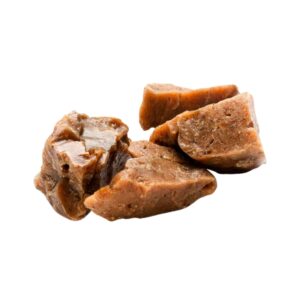
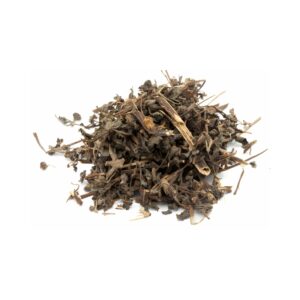
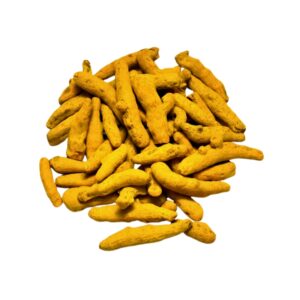
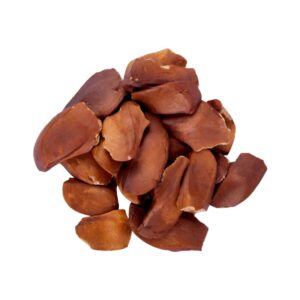

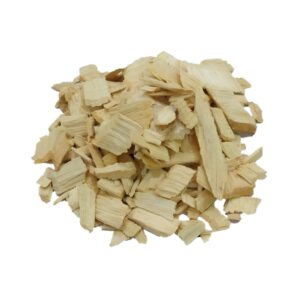
Reviews
There are no reviews yet.